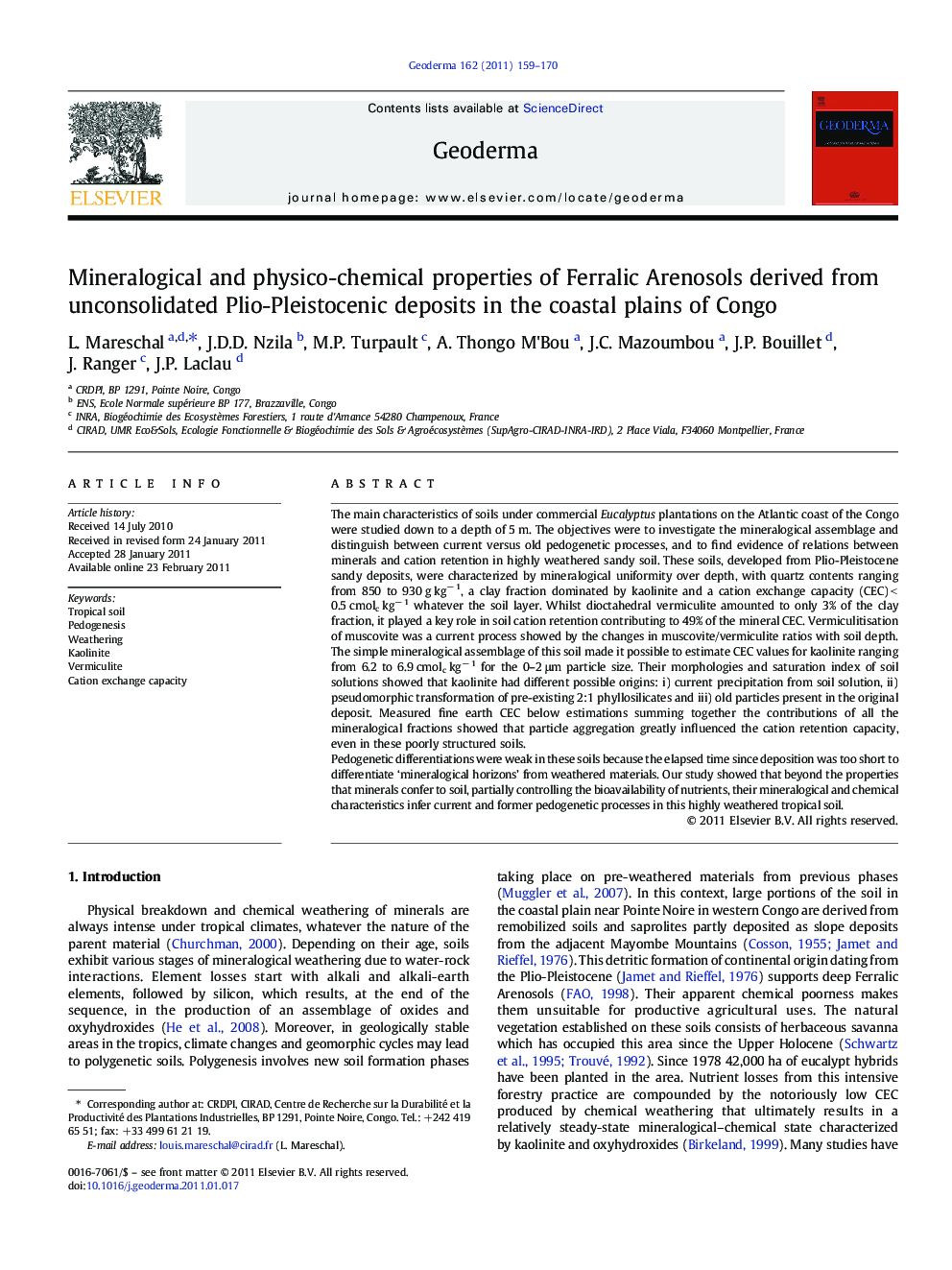| کد مقاله | کد نشریه | سال انتشار | مقاله انگلیسی | نسخه تمام متن |
|---|---|---|---|---|
| 4574121 | 1629511 | 2011 | 12 صفحه PDF | دانلود رایگان |

The main characteristics of soils under commercial Eucalyptus plantations on the Atlantic coast of the Congo were studied down to a depth of 5 m. The objectives were to investigate the mineralogical assemblage and distinguish between current versus old pedogenetic processes, and to find evidence of relations between minerals and cation retention in highly weathered sandy soil. These soils, developed from Plio-Pleistocene sandy deposits, were characterized by mineralogical uniformity over depth, with quartz contents ranging from 850 to 930 g kg− 1, a clay fraction dominated by kaolinite and a cation exchange capacity (CEC) < 0.5 cmolc kg− 1 whatever the soil layer. Whilst dioctahedral vermiculite amounted to only 3% of the clay fraction, it played a key role in soil cation retention contributing to 49% of the mineral CEC. Vermiculitisation of muscovite was a current process showed by the changes in muscovite/vermiculite ratios with soil depth. The simple mineralogical assemblage of this soil made it possible to estimate CEC values for kaolinite ranging from 6.2 to 6.9 cmolc kg− 1 for the 0–2 μm particle size. Their morphologies and saturation index of soil solutions showed that kaolinite had different possible origins: i) current precipitation from soil solution, ii) pseudomorphic transformation of pre-existing 2:1 phyllosilicates and iii) old particles present in the original deposit. Measured fine earth CEC below estimations summing together the contributions of all the mineralogical fractions showed that particle aggregation greatly influenced the cation retention capacity, even in these poorly structured soils.Pedogenetic differentiations were weak in these soils because the elapsed time since deposition was too short to differentiate ‘mineralogical horizons’ from weathered materials. Our study showed that beyond the properties that minerals confer to soil, partially controlling the bioavailability of nutrients, their mineralogical and chemical characteristics infer current and former pedogenetic processes in this highly weathered tropical soil.
Research Highlights
► Minerals reveal current and former pedogenesis, resulting from changing environments.
► Kaolinite had different origins: current precipitation and older before soil deposit.
► Goethite precipitated only in the original soils before the deposition process.
► Three percent of vermiculite in clay fraction represented 49% of the soil mineral CEC.
► At soil pH, CEC values for kaolinite ranging from 6.2 to 6.9 cmolc kg− 1.
Journal: Geoderma - Volume 162, Issues 1–2, 15 April 2011, Pages 159–170